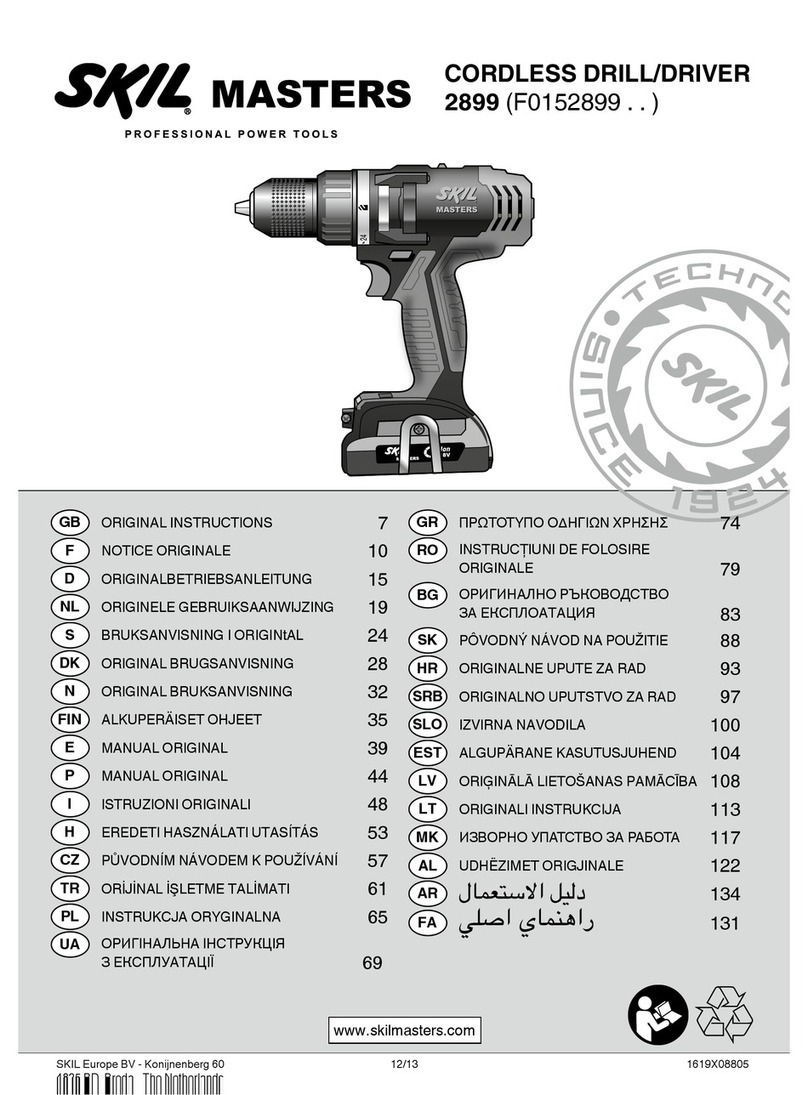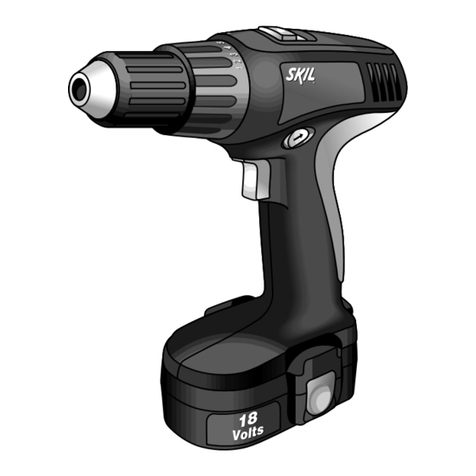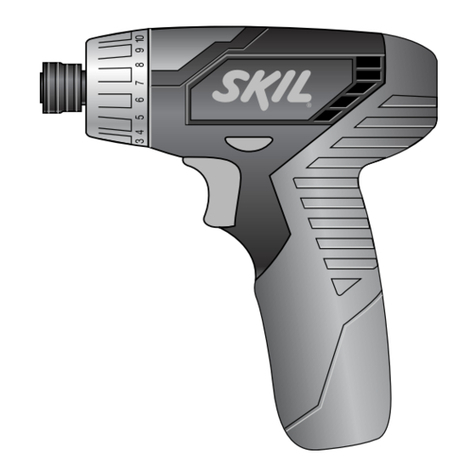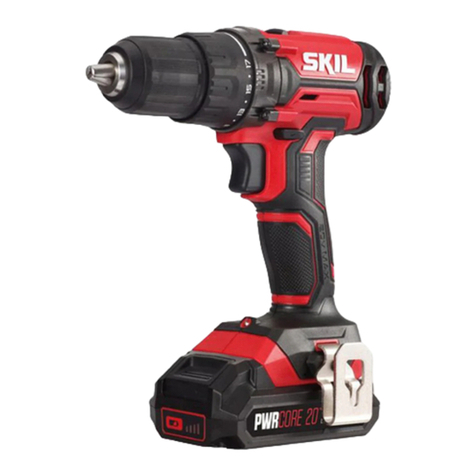Battery/Charger
before switching the tool "ON". Keys or
wrenches can fly away at high velocity
striking you or a bystander.
Do not run the drill while carrying it at
your side. Aspinning drill bit could become
entangled with clothing and injury may result.
This tool may be used with sanding and
polishing disks, grinding wheels, wire
wheel and wire cup brushes. These
accessories must be rated for at least the
speed recommended on the tool warning
label. Wheels and other accessories running
over rated speed can fly apart and cause
injury.
Avoid bouncing and snagging the wheels,
discs or brushes especially when working
corners, sharp edges, etc. This can cause
loss of control and kickback.
Use a stud sensor to determine where
studs may be located. The stud sensor
may also be able to detect other objects
hidden in a wall such as conduit, gas or
water pipes. If you are uncertain about
the work area call the local utility
company for assistance before beginning
the project. Striking or cutting into a gas
line will result in explosion. Water entering
an electrical device may cause electrocution.
Cutting into live electrical wiring may cause a
shock hazard.
Some dust created by
power sanding, sawing,
grinding, drilling, and other construction
activities contains chemicals known to
cause cancer, birth defects or other
reproductive harm. Some examples of
these chemicals are:
•Lead from lead-based paints,
•Crystalline silica from bricks and cement
and other masonry products, and
•Arsenic and chromium from chemically-
treated lumber.
Your risk from these exposures varies,
depending on how often you do this type of
work. To reduce your exposure to these
chemicals: work in a well ventilated area, and
work with approved safety equipment, such
as those dust masks that are specially
designed to filter out microscopic particles.
-4-
Before using battery charger, read all
instructions and cautionary markings on
(1) battery charger, (2) battery pack, and
(3) product using battery.
Use only the charger which accompanied
your product or direct replacement as
listed in the catalog or this manual. Do not
substitute any other charger. Use only Skil
approved chargers with your product. See
Functional Description and Specifications.
Do not disassemble charger or operate
the charger if it has received a sharp blow,
been dropped or otherwise damaged in
any way. Replace damaged cord or plugs
immediately. Incorrect reassembly or
damage may result in electric shock or fire.
Do not recharge battery in damp or wet
environment. Do not expose charger to
rain or snow. If battery case is cracked or
otherwise damaged, do not insert into
charger. Battery short or fire may result.
Charge only Skil approved rechargeable
batteries. See Functional Description and
Specifications. Other types of batteries may
burst causing personal injury and damage.
Charge battery pack in temperatures
above +40 degrees F (4 degrees C) and
below +105 degrees F (41 degrees C).
Store tool and battery pack in locations
where temperatures will not exceed 120
degrees F (49 degrees C). This is important
to prevent serious damage to the battery
cells.
Battery leakage may occur under extreme
usage or temperature conditions. Avoid
contact with skin and eyes. The battery
liquid is caustic and could cause chemical
burns to tissues. If liquid comes in contact
with skin, wash quickly with soap and water,
then with lemon juice or vinegar. If the liquid
contacts your eyes, flush them with water for
aminimum of 10 minutes and seek medical
attention.
!
WARNING
SM 1619X00347 11-04 11/9/04 10:43 AM Page 4



















































